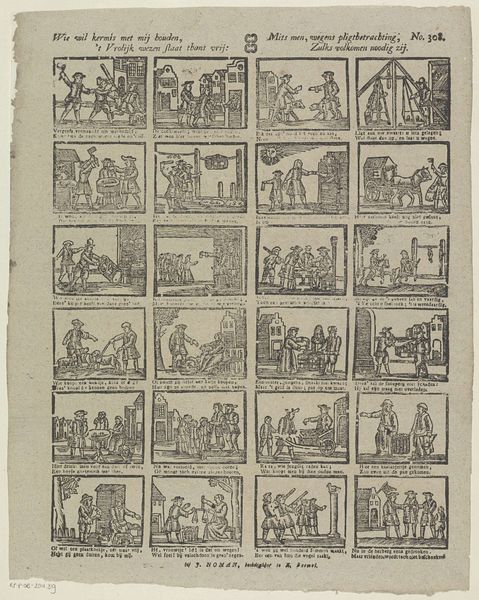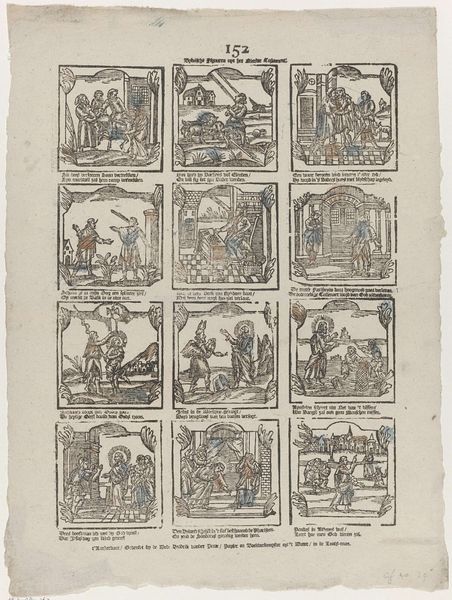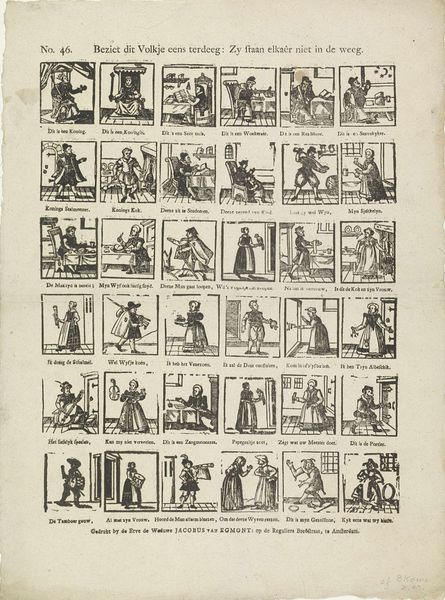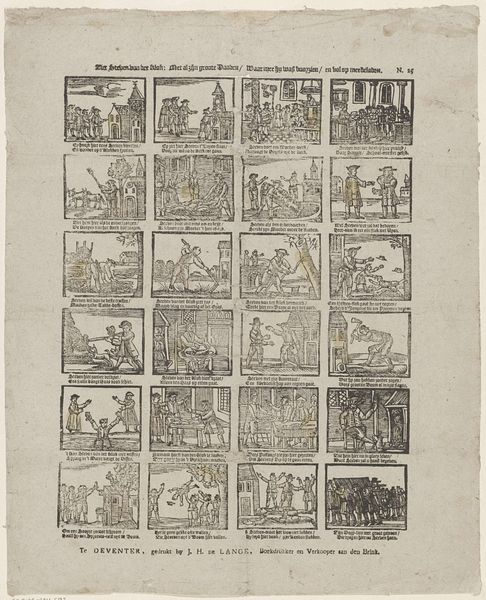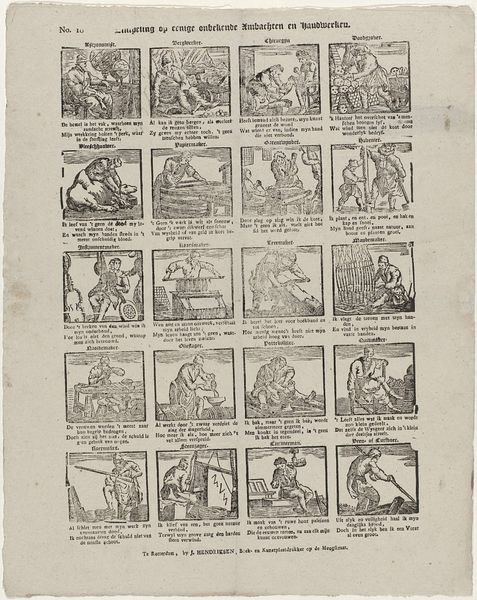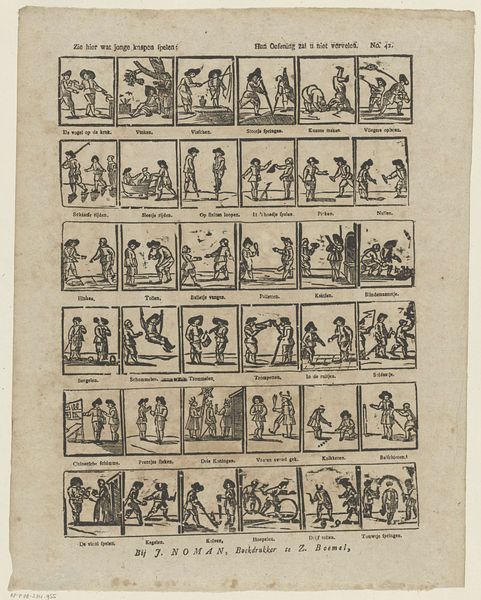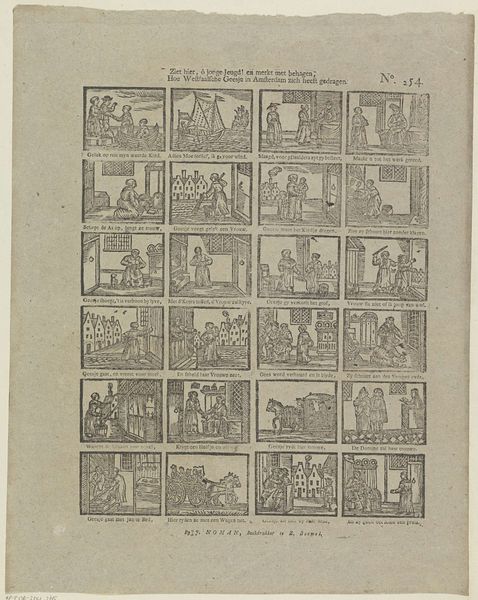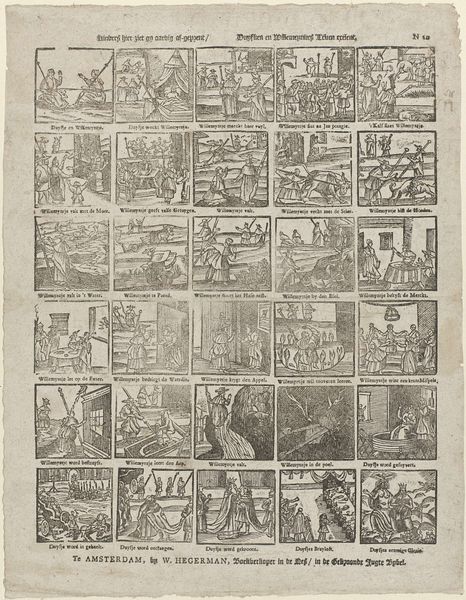
Ziet eens wat voor zware slagen / Dees gelovige hebben moete dragen 1767 - 1793
0:00
0:00
graphic-art, print, engraving
#
graphic-art
#
medieval
#
narrative-art
# print
#
engraving
Dimensions: height 419 mm, width 330 mm
Copyright: Rijks Museum: Open Domain
Editor: This print, "Ziet eens wat voor zware slagen / Dees gelovige hebben moete dragen," is from somewhere between 1767 and 1793. It’s currently at the Rijksmuseum and the print medium looks like engraving. It is very busy with little figures that look medieval. I notice these are all depictions of saints, but the scenes look rather violent. What do you see in this piece? Curator: Indeed. Each small tableau functions as a symbolic shorthand. We're witnessing hagiography—visual biographies condensed into potent images. Think of them as spiritual calling cards that tap into centuries of cultural memory. Each image, such as St. Sebastian pierced by arrows or St. Lawrence grilled alive, isn’t just a scene of suffering, it's an emblem. It triggers the recognition of shared values and cultural understanding. Editor: So, these aren’t just pictures, but a kind of… visual language? Is that why the violent scenes don’t feel shocking, more… symbolic? Curator: Precisely. The suffering depicted doesn’t demand our literal horror. Rather, it calls upon the established iconographic repertoire: a language that was understood to represent moral steadfastness or a triumph of spirit. Do you recognize how these narratives, while shocking to our contemporary sensibilities, acted as communal glue, cementing social understanding? Editor: I do now! They're drawing on a common symbolic understanding. Curator: Exactly, and how this encodes historical memory as cultural memory and cultural continuity. Editor: Fascinating. I had not realized it was about recognizing this visual language from the past. Thanks so much. Curator: My pleasure. Looking through this lens definitely provides another way to consider images like this.
Comments
No comments
Be the first to comment and join the conversation on the ultimate creative platform.

